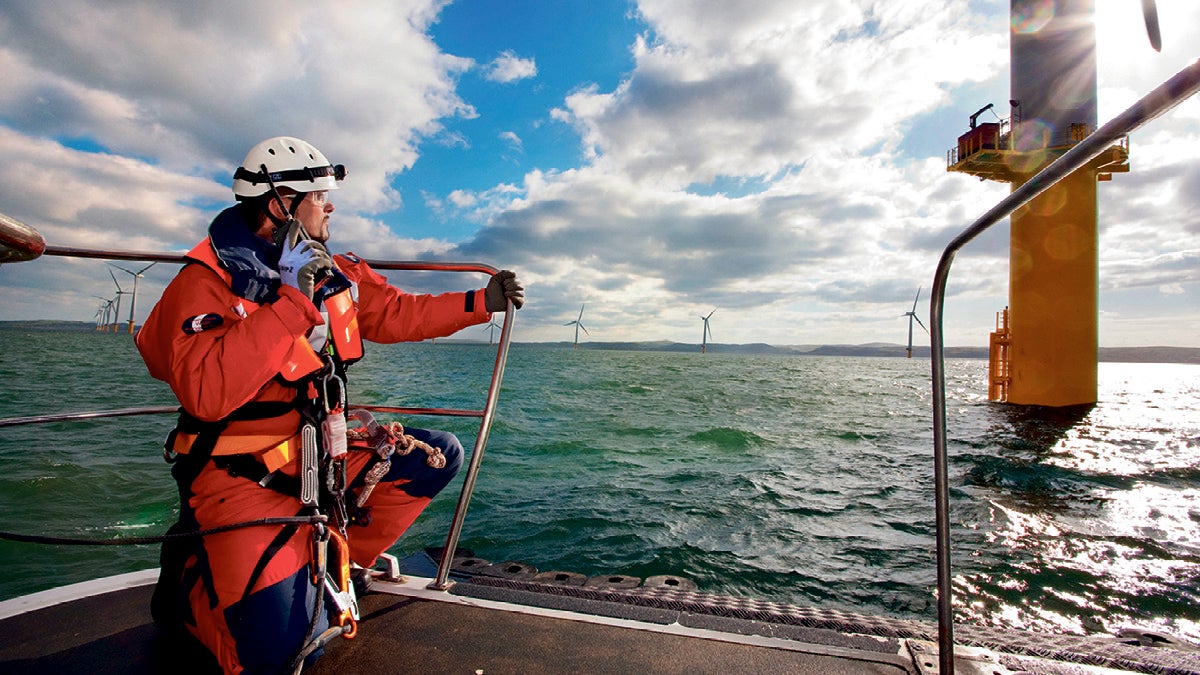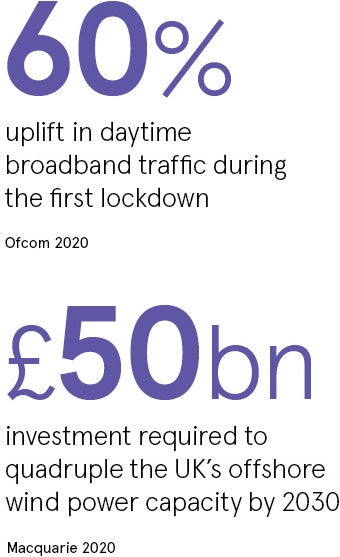
Given the extraordinary global health crisis we are living through, it would be easy for the decarbonisation and digitalisation of public infrastructure to slip down the political agenda. However, here in the UK, it’s been really encouraging to see these challenges being prioritised by the government.
In November, prime minister Boris Johnson announced a ten-point plan to make the UK a nation rich in green infrastructure investment opportunities and jobs. This was swiftly followed by the publication of a broader National Infrastructure Strategy that has called for a radical improvement in the quality of the UK’s infrastructure.
The government had already created a legal commitment for the UK to reach net-zero greenhouse gas emissions by 2050. But by delivering a strategy and a set of goals to help take us there, ministers have made a powerful statement of intent and direction. As an unprecedented and unpredictable year draws to a close, I am greatly encouraged by this sense of momentum and the important role for the private sector and private finance in delivering it.
Infrastructure investment will help to accelerate the nation’s recovery from the pandemic. But with government spending already stretched, the prime minister has made it clear that the £12-billion state financing pencilled in for the green industrial revolution must be tripled by private sector investment, to the tune of £42 billion. We should be confident we can achieve this and more. The UK has already proven itself more than capable of catalysing private finance to build green public infrastructure.
Take offshore wind. Long-term, effective public-private planning and financing, including Macquarie’s own Green Investment Group, which started life as a government initiative, has helped the UK become the largest offshore wind market in the world. It is because of strong policy frameworks that we have seen the cost of offshore wind fall by two-thirds in the past five years. It’s a tremendous success story for the UK and bodes well for the goals ahead of us.
To meet the government’s ambition to quadruple the UK’s offshore wind power capacity by 2030, we estimate it will require £50 billion in investment to achieve this goal alone. It’s bold, but the investment and regulatory frameworks have been established. The stage is fully set for this huge investment to happen.
We see a significant opportunity to repeat this success in other technologies and sectors. There are a host of exciting new investment opportunities that could prove transformative for the nation’s economic and environmental future, and deliver real regional development benefits in almost every corner of the UK.

At Macquarie Infrastructure and Real Assets (MIRA), we see high potential in low-carbon hydrogen fuelling UK homes and businesses. Heating for homes and businesses accounts for half of the UK’s energy consumption and one third of its carbon emissions. While we don’t believe hydrogen is the only low-carbon heating solution, it is a key piece of the net-zero puzzle. One of our own businesses, national gas distributor Cadent, is currently demonstrating the feasibility of blending up to 20 per cent hydrogen into the UK’s natural gas network.
Carbon capture and storage (CCS) technology is another complementary method to cut the nation’s carbon output. Right now, Cadent is planning a new hydrogen pipeline and the creation of the UK’s first CCS infrastructure in north-west England. As emerging technologies, both hydrogen and CCS will need clear, long-term government support to draw in consistent private investment. The good news is we have the investment frameworks already in place.
The UK has already proven itself more than capable of catalysing private finance to build green public infrastructure
Alongside decarbonisation, the UK government also has digital ambitions to achieve a gigabyte-capable economy by 2025. For those who have migrated to working or studying from home this year, the case for full-fibre, high-speed coverage across every part of the UK has never been stronger; Ofcom reported an increase in daytime broadband traffic of up to 60 per cent during the first lockdown. Each month, we are reaching new internet traffic peaks. The average UK adult, according to Ofcom, now spends a daily average of at least four hours online.
Regional digitalisation projects are already underway, delivering significant returns for investors and for the communities they serve. Hull, for example, is home to the UK’s fastest internet network, with average speeds of 94.7Mbps. This is the result of internet provider KCOM’s seven-year investment programme, which saw the city become the first in the country to have fibre laid down in every street. Crucially, the investment led to £469 million of incremental economic activity in the area. Earlier this year, under MIRA’s ownership, KCOM announced a £100-million investment to further expand its network to underserved communities in England’s north.
These are just a handful of opportunities for the private and public sectors to create flexible, well-connected and low-carbon infrastructure across the UK. So how do we realise them?
The priority for all of us is to build on the momentum and direction set by the government in the past month. This will take strong partnerships across government, the private sector and the communities who will be the ultimate beneficiaries of these investments. “Build, build, build” is the right message. It now needs to be backed up by a team effort to “plan, collaborate and get it done”.
The stakes are high. Done well, infrastructure investment stimulates job creation and helps deliver better work, health and financial outcomes for the entire country. It provides real assets, not just in the financial sense of the term, but in solid, tangible improvements to our everyday lives, whether that be through ultra-fast internet access or through cleaner air and power.
The scale of private capital required to deliver this new era of decarbonised, digitalised infrastructure will be huge. However, I am positive that further private investment can and will come. The government is pushing on an open door: the public wants a cleaner, more connected country and the private sector wants to be part of the solution.
You can learn more about MIRA’s work at mirafunds.com
Promoted by Macquarie

Given the extraordinary global health crisis we are living through, it would be easy for the decarbonisation and digitalisation of public infrastructure to slip down the political agenda. However, here in the UK, it’s been really encouraging to see these challenges being prioritised by the government.
In November, prime minister Boris Johnson announced a ten-point plan to make the UK a nation rich in green infrastructure investment opportunities and jobs. This was swiftly followed by the publication of a broader National Infrastructure Strategy that has called for a radical improvement in the quality of the UK’s infrastructure.
The government had already created a legal commitment for the UK to reach net-zero greenhouse gas emissions by 2050. But by delivering a strategy and a set of goals to help take us there, ministers have made a powerful statement of intent and direction. As an unprecedented and unpredictable year draws to a close, I am greatly encouraged by this sense of momentum and the important role for the private sector and private finance in delivering it.

